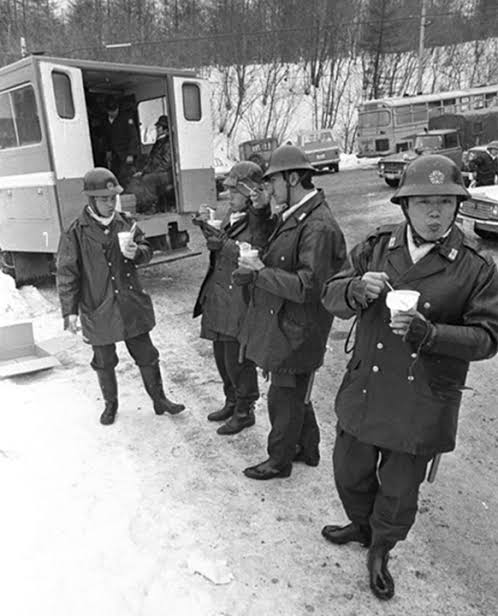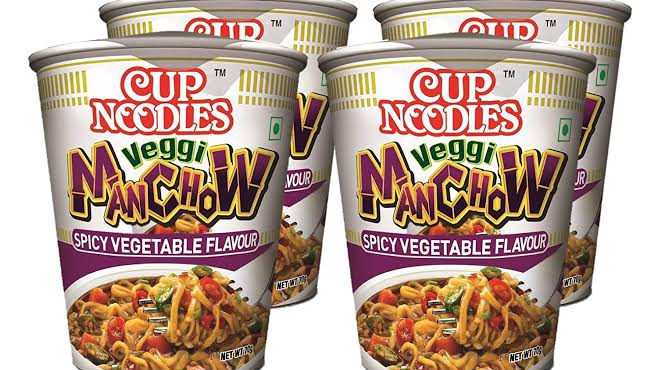You might think of dorms and reasonable calories when you see a container of Cup Noodles in a convenience store.
However, there was a moment when eating from the product’s iconic package radiated cosmopolitanism, when the on-the-go meal represented possibilities – Japanese industrial cuisine with an American twist.
Cup Noodles are portable instant ramen eaten with a fork straight from their white, red, and gold cups, which were initially introduced in Japan 50 years ago, on September 18, 1971, with an English name that omitted the “s” due to a translation error.
It’s a well-known Japanese tale: Cup Noodles were created by Ando Momofuku, the same person who invented instant ramen and started Nissin Foods in 1948.
Ando was born in Japan-occupied Taiwan in 1933 and migrated to Osaka the following year. Ando observed people lining up to buy cheap bowls of noodles from black market booths in war-torn Japan. The noodles were created with wheat flour given by the United States for making bread, a more substantial cuisine that is not often consumed in Japan.
Ando erected a laboratory shack in his garden to create noodles that people could eat at home. In 1958, after a series of fruitless attempts, inspiration struck. He realized that oil eliminated moisture while watching his wife, Masako, fry tempura.
He subsequently learned that by boiling fried and dried noodles, he could rehydrate them. Seasoning powder and dehydrated toppings could be used to create a variety of flavor combinations. Chicken soup sounded rich, healthful, and American to Ando, so he chose it as the initial flavor.
Ando had problems attracting investors because his “Chikin Ramen” was six times the price of a bowl of fresh noodles. He came up with the idea of bringing his product directly to the public through sampling sessions. Chikin Ramen became popular after WWII and became one of the most popular cuisines in Japan.
Because of market saturation, Japanese sales of his Chikin Ramen – and spinoff items like “Spagheny,” an instant spaghetti introduced in 1964 – began to fall in the mid-1960s. Ando then examined for a new market for instant ramen, which he found in the United States.
Sukiyaki — beef and vegetables cooked in a hotpot – was popular in the United States at the time because it appeared exotic while still fitting the American palate. Ando believed that quick ramen may achieve the same results.
So he went to the United States in 1966 to market Chikin Ramen. He was shocked to see Americans tear dried noodles into pieces, place them in cups, then pour boiling water over them, rather than making Chikin Ramen in a pot and serving it in a bowl.
When Ando returned to Japan, he set out to create a new product for the Japanese market that was influenced by this American preparation process.
The Nissin team discovered a way to wrap a plastic foam cup around dry noodles positioned in the centre for easy expansion after much trial and error. Different tastes were sprinkled on top of the noodles to help them cook faster and appear more substantial. Ando had eaten a container of macadamia nuts on his transpacific flight, therefore the cup had a pull-back lid.
With bold English text in a red psychedelic font over small Japanese words and gold bands inspired by costly dinner plates, Otaka Takeshi, who designed the logo for the Osaka 1970 world’s fair, intended the cup to look cosmopolitan and cutting edge. Cup Noodle had roughly the same amount of ramen as the dried packs but cost four times as much due to the higher manufacturing costs. Cup Noodle seemed opulent because of its price.
In Japan, however, eating while walking is considered impolite. It’s even more difficult using chopsticks. As a result, Nissin decided to alter people’s eating habits. A little plastic fork was included with each Cup Noodle.
To promote Cup Noodle and train people on how to consume it, Nissin conducted tasting sessions in Japan. On November 21, 1971, in Tokyo’s Ginza shopping area, the most successful was staged. It was aimed at young adults walking through Japan’s most fashionable street, “Pedestrian Paradise.”
In just four hours, over 20,000 Cup Noodle units were sold.
Nissin also promoted the product to on-the-go personnel, such as the Japan Self-Defense Forces. Cup Noodle had an unintentional PR boost when footage of police officers eating Cup Noodle to stay warm during the Asama-Sans Incident was broadcast.
Cup Noodle embodied the popular view in postwar Japan that a better life could be had by relying on convenience and comfort, whether it came in the form of refrigerators, televisions, or takeout meals.
In 1969, Japan’s first convenience stores debuted, becoming the principal distributors of Cup Noodle. Nissin’s Ginza Cup Noodle event was hosted in front of Japan’s first McDonald’s, which had opened four months prior on the Pedestrian Paradise on July 20, 1971. Cup Noodle was one of the first dishes to be served in vending machines in Japan, with the first Cup Noodle vending machine being put near the Nihon Keizai financial newspaper’s Tokyo headquarters in November 1971.
Instant ramen became a go-to cuisine for economically vulnerable communities as the production process improved and prices fell.
Cup Noodle has used a number of effective Japanese marketing methods. They contain a constant supply of new tastes, ranging from Japanese comfort dishes like chicken teriyaki to exotic fare like curries, as well as limited-edition flavors like “Cheechili Curmato” (chilli, tomato, and European cheese curry, anyone?).
Marketers exploited nostalgia and fan collaborations to help sell the product. Nissin employed the typical Japanese advertising practice of hiring American celebrities to market their products in a memorable 1992 television commercial, featuring James Brown singing about miso-flavored Cup Noodle to the tune of “Get On Up.”
However, none of these tactics were employed to sell Cup Noodles in the United States.
In the United States, the product went a different course, eschewing foreignness and glamor in favor of becoming a commonplace American meal.
Cup Noodle was originally introduced in the United States in November 1973, at a time when Japanese products such as Toyota cars were created to be distinct from those made in the United States while yet being simple to comprehend, pronounce, and accept by Americans.
It was renamed “Cup Noodles” in 1993 after being renamed “Cup O’Noodles” in the United States. It had shorter noodles that could be eaten with a spoon and fewer flavors than those available in Japan.
In 1973, Nissin launched its first overseas manufacturing plant in Lancaster, Pennsylvania. Cup Noodles is now produced in 80 nations and territories, each with its own regional variations, as of 2021. In India, for example, masala Cup Noodles are popular, while mushroom Cup Noodles are popular in Germany. Nissin’s Cup Noodles have sold 50 billion units worldwide by May 2021. As per Bigthink.
Cup Noodles has become a symbol of both trendiness and nostalgia in Japan. Cup Noodles Museums in Japan allow visitors to create their own personalized Cup Noodles. Cup Noodles have been advertised in Japan by popular characters such as Yoda and Hello Kitty.
From 1996 to 2006, a neon 60-foot Cup Noodles ad hung in New York’s Times Square, symbolizing Nissin’s global reach. It symbolized the belief that making it large in America is the path to business success, which is popular in Japan.
Cup Noodles, on the other hand, has succeeded in masking its Japanese roots in the United States.



